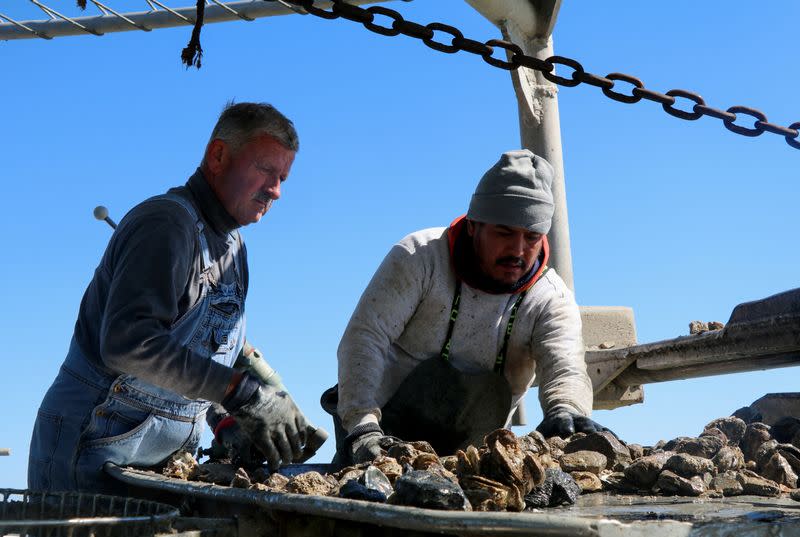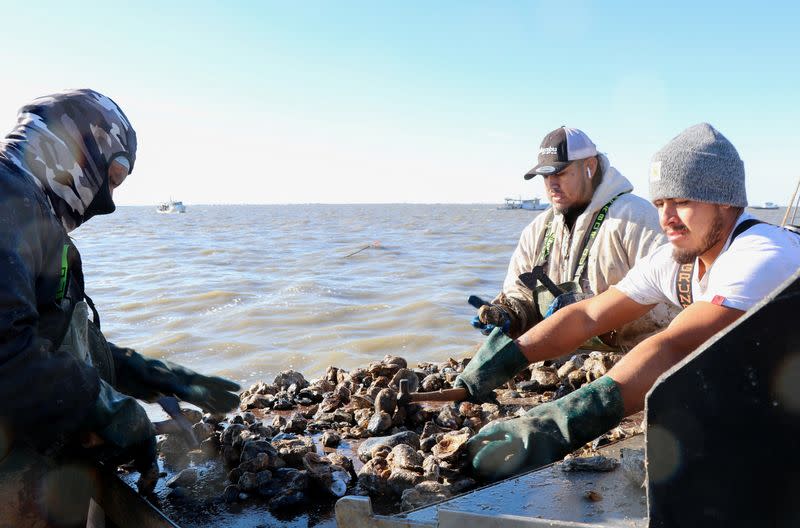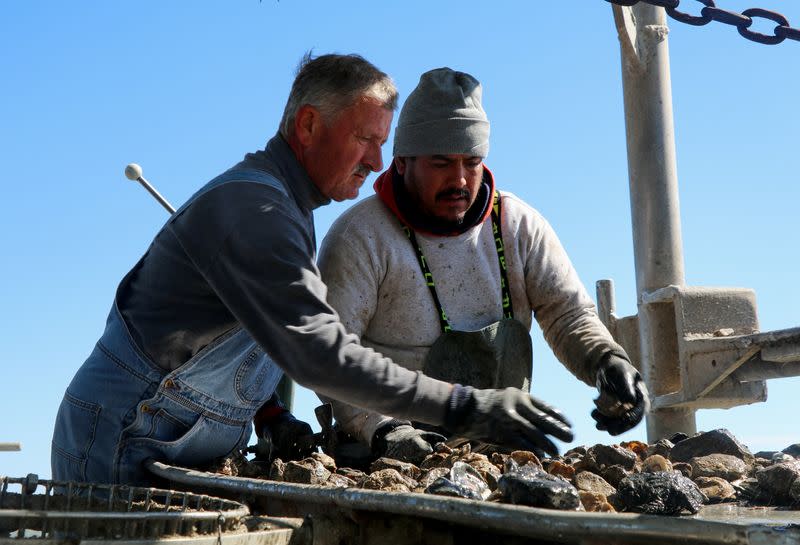Climate change, overharvesting exacerbating Texas oyster decline
(This Nov. 28 story has been corrected to fix the name of the National Oceanic and Atmospheric Administration in paragraph 9)
By Evan Garcia
GALVESTON, Texas (Reuters) - For the second year in a row, Texas has closed the majority of its public oyster reefs for harvesting due to declining populations.
Wildlife officials say these dwindling numbers are caused by extreme weather events fueled by climate change, as well as by overharvesting.
For the oystermen who make a living from harvesting oysters in the Gulf of Mexico's Galveston Bay area during a season that normally runs from November through April, these closures mean a hit to their business.
"We start to come across problems a few weeks into the season. Just scarcity. Not much oyster, harder to find oyster. Areas get closed down," said Joel Gutierrez, a 21-year-old oysterman from Galveston, Texas.
Oysterman Romeo Bilcic said this year's catch was as bad as he had seen in 41 years of harvesting. "It's getting worse every year. You know, we've been trying, these few areas where they open, we tried to work it out. But the product is just not here."
The Texas Parks and Wildlife Department (TPWD) has already closed multiple harvest areas, as it did last year. The state's Department of Health and Human Services listed six out of 29 public harvest areas open as of late November 2023.
DECLINING POPULATIONS
Scientists estimate at least 85% of the world's oyster reefs have been lost, largely to overharvesting and disease.
To harvest oysters, boats drag an underwater dredge across oyster reefs, collecting reef material that is dumped onto the boat. Oystermen then chip away at the rocks and shells to gather legal-sized oysters.
But dredging destroys the oyster reefs, which are also a habitat for fish and crabs, says the National Oceanic and Atmospheric Administration.
The Texas oyster industry has the potential to be worth $30 million or more annually, said TPWD biologist Zach Olsen, but it has rarely reached that level in recent years.
Data provided by TPWD to Reuters showed an annual average of 730 oysters caught per hour in Galveston Bay between 2000 and 2003, slumping to an annual average of 221 oysters caught per hour in the same bay from 2019 to 2022.
Oysters flourish when there is just the right amount of rainfall, said Olsen.
Drought and heavy rainfall can be cyclic, but with climate change, "we're certainly seeing more frequent droughts, more frequent rainfalls and some of those being more extreme," he said.
"And so, especially in the past decade, we've seen impacts from both harvest and heavy rainfall, heavy drought impacting those oyster populations."
Drought can increase the temperature and salinity of coastal waters, for example, leaving oysters more susceptible to diseases and predators, said marine biology professor Jennifer Pollack at Texas A&M University-Corpus Christi.
"They're fighting off all these other stressors and they're not growing as well," she said. "So, you're not going to have as healthy a harvest of oysters out of those bays, which is going to affect the economy of the region. But it's also going to affect the ecology of the reef, because these healthier oysters aren't there to reproduce for the next year."
(Reporting by Evan Garcia, Writing by Christina Anagnostopoulos; Editing by Rosalba O'Brien)



